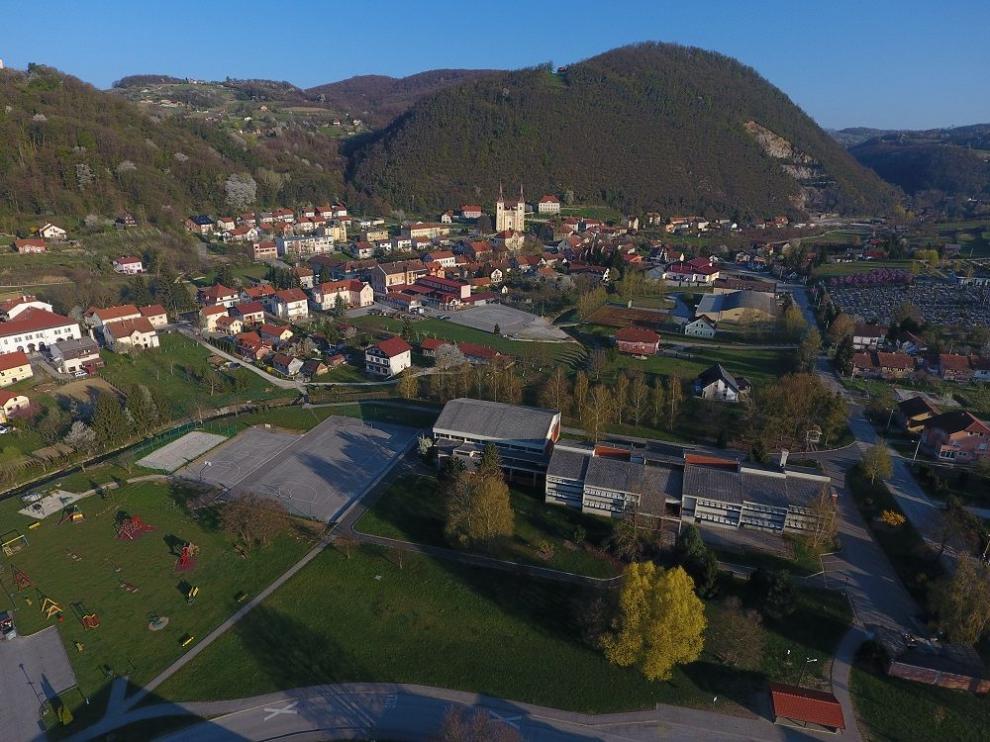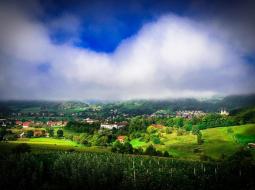Thessaloniki gets ready for its metro launch in November
The underground rapid transit lines have been under construction for almost two decades due to various project delays
 TheMayor.EU logo
TheMayor.EU logo 
The name of Pregrada was mentioned for the first time in 1334 in the list of parishes of the Archdeacon Ivan Goricki.
The patronage of the church was vested in the lords of Kostelgrad - the Keglevic family to whom Pregrada belonged until the end of the XIX century. The construction of Kostelgrad began around 1242, and due to the Tatar invasion, the population fled to the mountainous areas where they could shelter.
The location of Kostelgrad made it possible to control the road that followed the course of Kostelina. In 1548 the settlement was first mentioned as Purga sub castro Kozthel. At the end of the XVI century, the Keglevići built the Gorica Castle, and later the Dubrava Castle.
The Kostel fortress was gradually abandoned during the XVII century and completely abandoned in the XVIII century.
The fundamental problems of the suburban area in the XIX century were overpopulation, lack of land and employment opportunities. At the time of the revolutions of 1848-49, there was unrest in Pregrada. The feudal system was abolished in 1848.
In the late XIX and early XX centuries, Pregrada was home to the first chemical-pharmaceutical company in Southeast Europe founded by Adolf Alfons Thierry. Thanks to him and his company Pregrada had its first telephone installed in 1903.
At that time there was a coal mine in what used to be a partition mine. In 1953 the plant was strengthened, and it became an independent working organization known as Coal Mines. In 1975, however, the mine was closed.
The Zagorje region was a strategically important area during World War II, as it was located between Germany, Hungary and Zagreb. After the capitulation of Yugoslavia, the Germans annexed part of the former district of Pregrada to the Third Reich.
This was done because the glass factory Guardswhich was located in Hum na Sutli, but also because of a more geographically convenient placement of the border. That part of the territory remained under German rule for only a few months, and was then returned to the Independent State of Croatia.
The importance of the territory for the Independent State of Croatia led to the constant presence of military units, so the Ustaša soldiers (Croatian Revolutionary Movement) had units in Pregrada, Bezenac, Hum and Vinagora. The Ustaša also wanted to prevent the influence of the Liberation Movement in Zagorje. Very soon after the establishment of the Ustaša regime in the Zagorje region, the first groups began to express their dissatisfaction with the new situation.
In October 1943 the second Zagorje detachment was established (after the failure of 1942) and later the partisans from the surrounding counties gathered in the Upper Tribe where they held a large national assembly. The end of the war brought a significant political as well as economic changes in the Zagorje region.
In 1955, the municipality of Pregrada was established. It existed until 1962 when it was annexed to the municipality of Krapina. This fellowship lasted until 1978 when the Parliament of the Socialist Republic of Croatia re-formed the municipality of Pregrada, which included the areas of the local communities of Desinić, Hum na Sutli, Pregrada and Vinagor.
In the late XIX and early XX century, Pregrada was a district capital in the Varaždin County of the Kingdom of Croatia-Slavonia.
Pregrada is a town and municipality in Krapina-Zagorje County in north-western Croatia. The population of the town is around 6,600 people (2011 census).
Most of the land belongs to agricultural cadastral crops and is an important resource basis for possible further development in terms of intensification of agricultural production and processing of agricultural products. The suitability of agricultural land is evident in the favorable position of agricultural land in stream valleys and gentle slopes.

Pregrada is surrounded by the Kunagora mountain massif. The mountain lodge and marked trails that lead to the medieval ruins of the town of Kostel-grad are an attractive destination for mountaineers and hikers. The first wine route in Croatia is situated on the beautiful Zagorje hills of Pregrada.
Pregrada is rich with architectural heritage from the past. Many aristocratic families lived here centuries ago, and their castles still exist. Some of them are open for visitors - Dobrava, Gorica and Bežanec.
A must-visit in Pregrada are the Thierrijeva pharmacy (one of the oldest pharmacies in Europe), the curia of the famous writer Janko Leskovar and many sacred places such as the Zagorje cathedral.